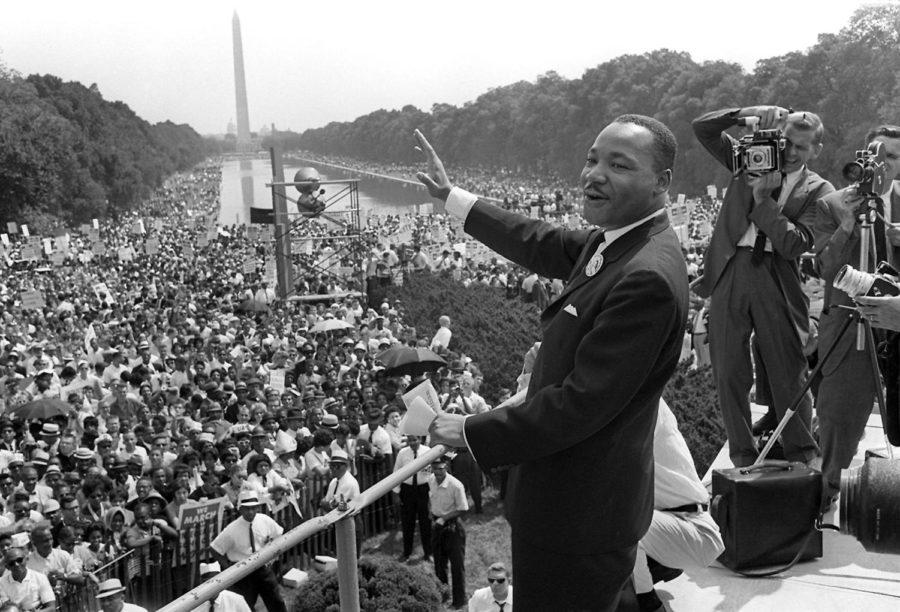‘I Have a Dream’ speech celebrates 50th anniversary
US civil rights leader Martin Luther King Junior waves to supporters from the steps of the Lincoln Memorial on August 28, 1963 on the Mall in Washington DC during the March on Washington.
August 27, 2013
Martin Luther King Jr.’s history with Iowa State reaches further than his 1963 “I Have a Dream” speech, which was presented 50 years ago.
King was a guest speaker on campus in 1960 in the Memorial Union’s Great Hall, according to the Ames Historical Society. Evidence of his visit, however, is not the only indicator that King’s message is present on campus.
“We’ve made progress, but we certainly haven’t resolved all of the issues that are out there, and this is going to continue to be a focus and an effort at Iowa State, I think, just trying to continue to implement programs that involve greater diversity on our campus,” Madden said.
King’s speech would come to be recognized as one of the most powerful speeches from the civil rights movement.
“It’s certainly a significant speech. He was a major contributor to changes in the country,” said Warren Madden, senior vice president for business and finance. “I think a lot of the progress that has been made in the country is due to his efforts.”
With more than 800 clubs on campus, students have access to a variety of organizations to get involved in, many of which are based on a multicultural element.
“The 50th anniversary is one of those sort of milestone dates that people try to recognize,” Madden said. “In the time, I would think for retrospectively looking back at what’s happened in that period of time, and then hopefully focus on the future. What do we need to accomplish in these areas going forward?”
Some students, for example, see gaps in the way black history is taught in the classroom.
“If you’re learning any type of U.S. history … it goes from slaves to civil rights,” said Damarius Fleming, graduate student in animal science who identifies as black, referring to the gap between the two time periods.
Other ways society can continue to march on may have nothing to do with the classroom.
“Maybe that’s one of the things that kind of affects Iowa State as a whole, is the whole campus has this learning curve of, ‘I’m just getting to college. I’m around all these new people, all these new things,’” Fleming said. “That makes for a weird interaction here at Iowa State.”
Increases in minorities have been a trend at Iowa State for the past couple of years, according to the Office of Enrollment. For example, 637 undergraduate students enrolled at Iowa State in 2011 identified as black, a number that includes U.S. Citizens, immigrants, refugees and asylees but not international students. That number jumped to 659 in 2012.
Similar trends appear in other minorities, including American Indian or Alaskan Native, Asian, Native Hawaiian or other Pacific Islander and Hispanic/Latino students at the undergraduate level between 2011 and 2012.
“I think it’s important to remember that it was more than a speech. It was about society as a whole,” said Glennda Bivens, graduate student in the education department. “And if we try to just box it as ‘I have a Dream’ speech, then that’s very problematic. Because we’re not really honoring the significance of all of those people united truly for a better America.”







